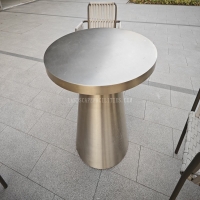Welcome to the website for landscape facilities products and knowledge.
Can composite materials be engineered to provide natural ventilation in structural sculptures?
The intersection of art and engineering has always pushed the boundaries of creativity and functionality. One intriguing question is whether composite materials—known for their strength, lightness, and versatility—can be engineered to provide natural ventilation in structural sculptures. The answer lies in the innovative application of material science and aerodynamic design.
Composite materials, such as carbon fiber-reinforced polymers or fiberglass, can be tailored to include porous structures or strategically placed openings that facilitate airflow. By integrating computational fluid dynamics (CFD) simulations, designers can optimize these features to enhance passive ventilation without compromising structural integrity. For instance, lattice-like composites or layered textures can create micro-channels that allow air to circulate naturally, reducing the need for mechanical systems.
Moreover, sustainable design principles align perfectly with this approach. Natural ventilation not only lowers energy consumption but also adds an interactive, dynamic element to sculptures—responsive to wind patterns and environmental conditions. Artists and engineers collaborating on such projects can create visually striking pieces that are also eco-conscious.
In conclusion, composite materials hold immense potential for enabling natural ventilation in structural sculptures. Through careful engineering and creative design, these materials can transform static art into living, breathable installations that harmonize with their surroundings. The future of architectural art may well depend on such innovative material applications.
Related search:

Recommendation
Outdoor Metal Table - Classic Outdoor Furniture, Stainless Steel Table, Durable and Reliable